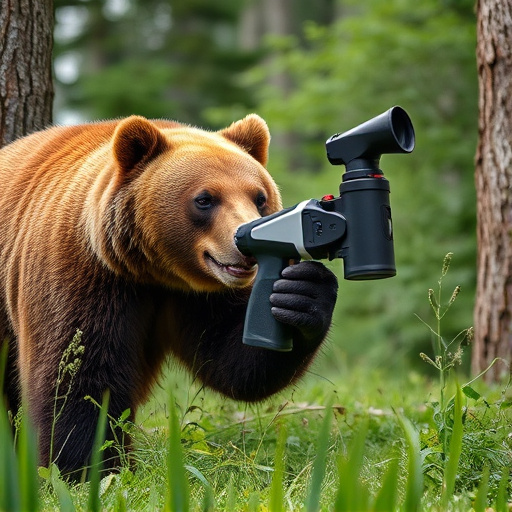Understanding bear repellents, especially bear spray, is crucial for hikers in bear-infested areas. Bear spray uses capsaicin from chili peppers to deter bears through temporary irritation. The effectiveness depends on the active ingredient's potency, which can diminish over time due to expiration. Checking expiration dates and understanding the ingredients, including propellants and preservatives, are vital for choosing reliable protection against potential bear encounters.
“As you plan your hiking adventure in Alaska’s breathtaking landscapes, safeguarding against potential bear encounters is paramount. This comprehensive guide equips you with essential knowledge about bear repellents and hiking gear. We delve into the intricacies of understanding bear spray, including ingredient analysis and expiry date considerations, to ensure your safety in the wild. Furthermore, discover beyond bear spray solutions for a complete approach to hiking gear preparation.”
- Understanding Bear Repellents: What You Need to Know
- Decoding Bear Spray: Ingredients and Expiry Date Significance
- Choosing the Right Gear: Beyond Bear Spray for Hiking Safety
Understanding Bear Repellents: What You Need to Know
Understanding Bear Repellents: What You Need to Know
Bear encounters while hiking can be frightening, but knowing how to prevent them and deter bears effectively is crucial for your safety. One of the primary tools in a hiker’s arsenal against bears is bear repellent, specifically bear spray. Unlike conventional sprays used for personal protection or pest control, bear spray is designed to create a barrier between you and potential bear threats. It’s important to understand that not all bear repellents are created equal; ingredients, effectiveness, and expiration dates vary significantly.
When considering bear spray, look beyond the brand and focus on the active ingredients. Commonly used components include capsaicin (from chili peppers), which irritates bears’ eyes, nose, and mouth, making them avoid the area. Additionally, does bear spray expire? Yes, most commercial bear sprays have a shelf life of up to 3 years if stored properly. Check the label for expiration dates and ensure you’re using a repellent that hasn’t passed its prime. Proper usage also plays a vital role; learn the recommended spraying techniques before venturing into bear country.
Decoding Bear Spray: Ingredients and Expiry Date Significance
Bear spray is a crucial component of any hiker’s gear when venturing into bear country. Decoding its ingredients and understanding its expiry date is essential for safety in the wilderness. The primary active ingredient in most bear sprays is capsaicin, derived from chili peppers. This ingredient creates a painful irritation in a bear’s eyes, nose, and respiratory system, temporarily deterring an attack. However, capsaicin potency can degrade over time, which is why checking the expiry date on your bear spray is vital.
Other ingredients in bear sprays may include propellants like butane or propane, as well as various preservatives to maintain the spray’s effectiveness. Some brands also add natural components like lemon eucalyptus oil for enhanced scent masking. While these additives can contribute to the overall performance of the spray, nothing beats checking the manufacturer’s recommended usage period, typically indicated by an expiry date or best-before label. Regularly inspecting and replacing expired bear spray is a simple yet effective measure to ensure its reliability when facing a potential bear encounter.
Choosing the Right Gear: Beyond Bear Spray for Hiking Safety
When hiking in bear country, prioritizing safety is paramount. While understanding bears and their behavior is crucial, carrying the right repellent gear, including reliable bear spray with checked ingredients and expiry date, is essential for a secure outdoor experience. Combining this with other practical items discussed can significantly enhance your hiking safety and peace of mind in Alaska’s beautiful but wild landscapes.
